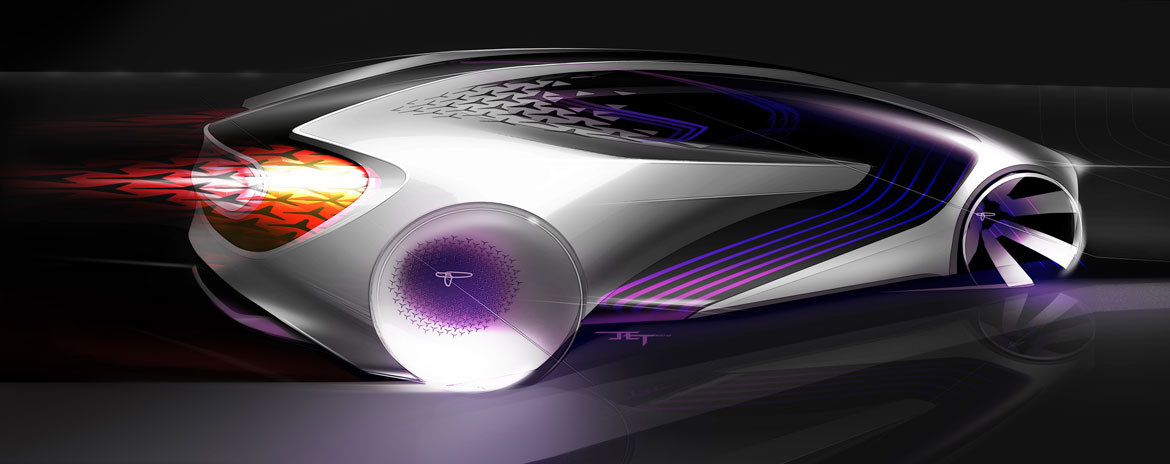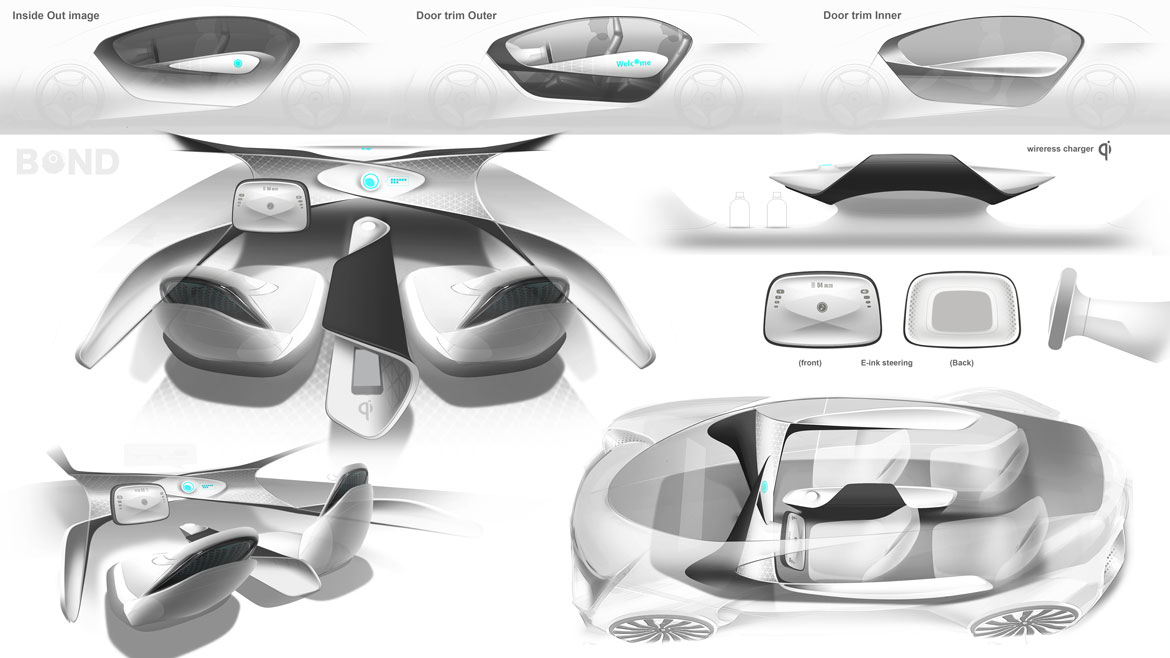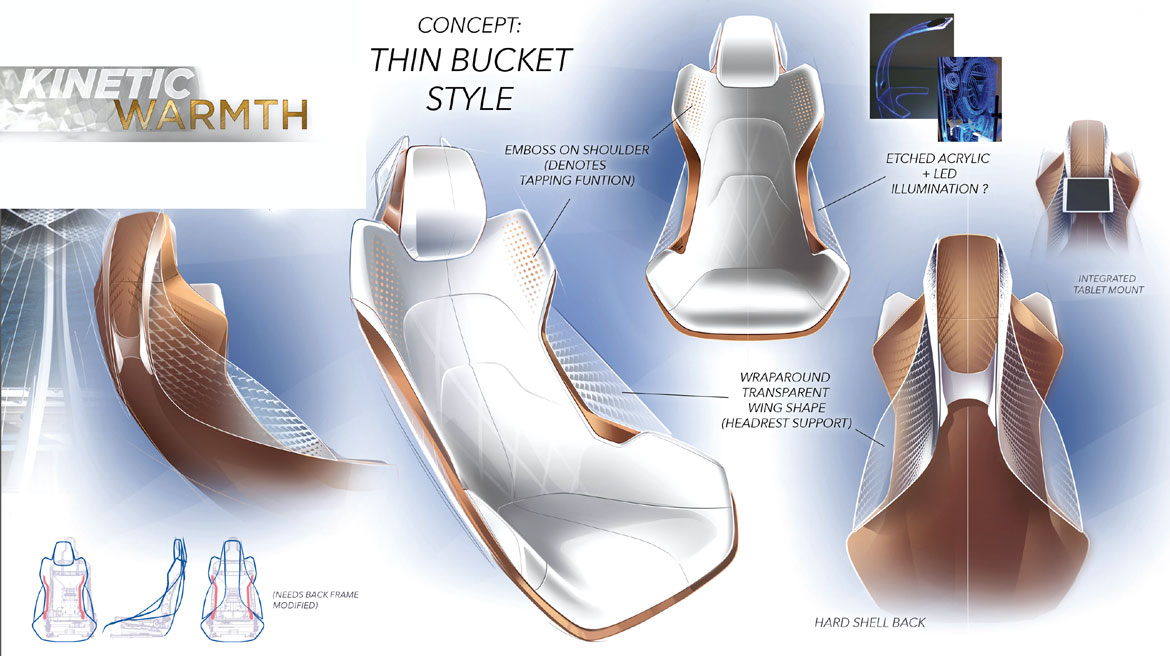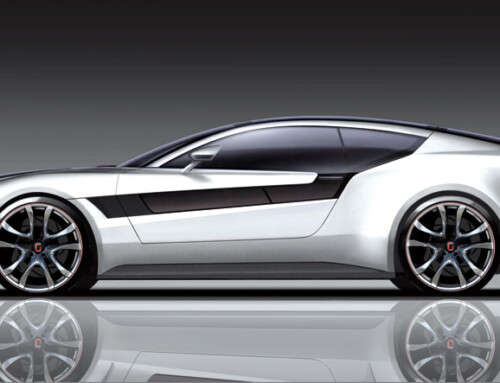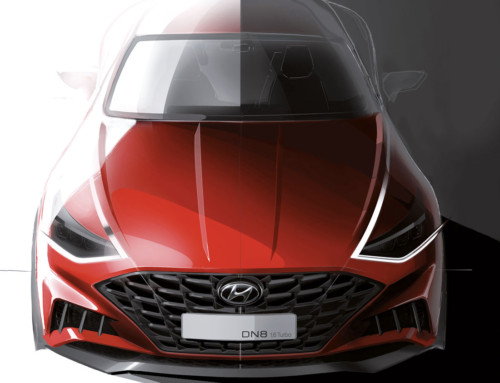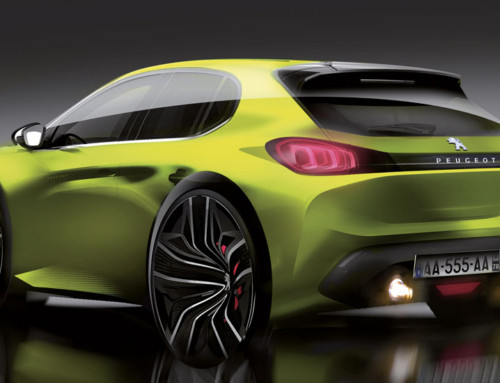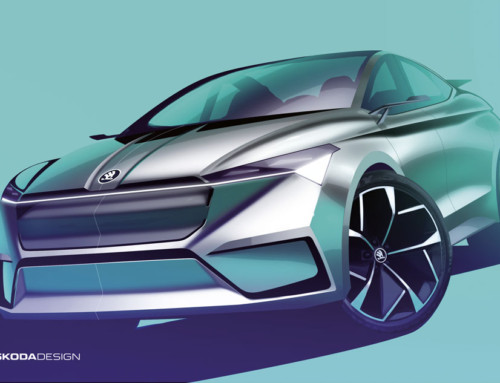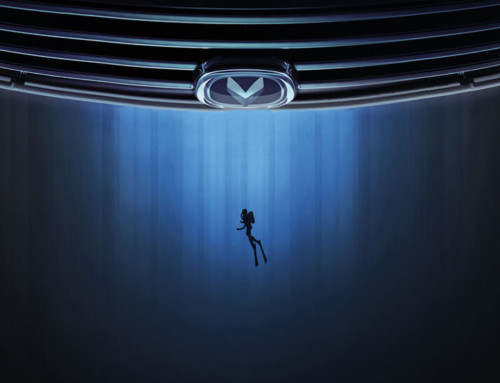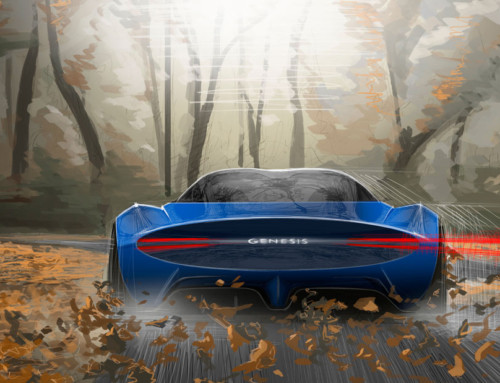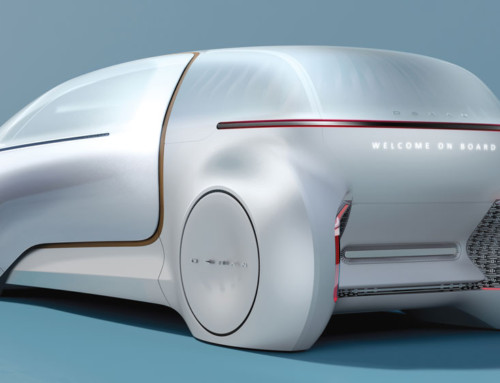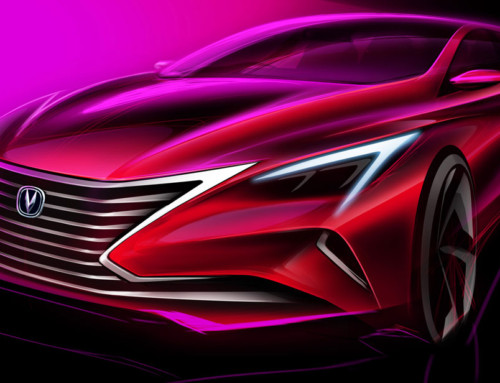Toyota unveiled the Concept-i at CES 2017, where it received a very positive reception. Chief amongst the car’s technological breakthroughs is its artificial intelligence agent, Yiu, which helps the driver in both autonomous and normal driving modes. This virtual assistant uses light, sound and touch to enhance the vehicle to driver relationship as well as to communicate with people around it.
Designed by Toyota’s southern California-based advanced design center, CALTY, with input from the San Francisco-based Toyota Innovation Hub, the designers started working on the concept long before they ever put pen to paper.
“We’ve been working on this for about two years now,” says Interior Project Design Manager William Chergosky. “This is the second model we’ve made. The first one was more of a prototype with testing out a lot of our ideas.”
The entire design is centered on the Yiu agent. The form language connects and holds the center disc in place, pulling it in from the outside or out from the inside out to create a seamless expression that breaks through conventional barriers. The horizontal forms of the IP swing around, spill into the door, out the glass and flare into the rear wheel wells, linking directly to the exterior through a sweeping DLO shape that runs from the top of the vehicle all the way down to the rocker panel below.
The forms, transitions and colorways all work in unison to create a car that embodies uniquely opposing qualities. It feels open and spacious as well as sporty and engaging; the organic shapes, pulled surfaces and patterns express movement and activity while also conveying purity and tranquility; and the ceramic white and ancient gold colors express technology and handmade craftsmanship.
The design stems around the design keyword of ‘Kinetic Warmth’ as well as the Japanese word ‘Omotenashi’, which loosely translates as ‘perfect hospitality at the right time’.
Entirely devoid of what CALTY Studio Chief Designer Ian Cartabiano calls “the tyranny of the black tablet” all information is instead conveyed via messages embedded in the car’s exterior and interior surfaces. It’s a lively, intriguing and humanistic approach that brings Toyota’s own ‘Vibrant Clarity’ design philosophy into the future.
The materials, patterns and lighting are also worthy of note. The interior features tin – a material that has a natural antimicrobial element to it; the bespoke 3D geometric patterns adorning the panels, DLO and rear lamps were used to express movement; and the lighting was created from warm hues (intense violet, warm green, warm teal) to communicate the drive mode to other road users.
“We didn’t want to make a cold tech box that seals the driver and passenger off from the outside world,” says Cartabiano. “We still wanted the driver and passenger to be connected,”
That the Concept-i received such a positive reception at the CES should come as no surprise. Autonomy is the most talked about subject in the automotive industry this year. But the way the CALTY team executed the concept from a design perspective is nothing short of phenomenal.
Full article in Auto&Design no. 223



